Have you ever wondered what Kimetsu no Yaiba actually even means? Or what the character names, such as Tanjiro and Nezuko, mean? We took a closer look at the title of the beloved series as well as the sub-titles for each season, and of course the names of the popular characters as well!
Table of Contents
Note: This article was written by a fan who has only seen the anime (but not read the manga), so possible spoilers are only up to what’s in Season 2 of the anime. We will update as Season 3 comes out.
Kimetsu no Yaiba Title Meaning

Image Source
“Kimetsu no Yaiba” is about a boy named Tanjiro and his journey to help save his sister who was turned into a demon after the rest of their family is killed by one. This series first began as a manga by Gotouge Koyoharu in 2016.
The title written in Japanese is 「鬼滅の刃」 which reads Kimetsu no Yaiba.
鬼滅 (kimetsu) is not a word you can find in the Japanese dictionary. Even when typing it out, you have to type out the whole title, or the two characters individually to get those specific kanji. This makes it tricky because many people simply call it “Kimetsu”.
Individually:
鬼 is oni or demon
滅 means to destroy
の is a possessive or descriptive particle
刃 means sword or blade; it can also be read “ha”
The Demon Slayers use a special blade, the only ones able to kill demons by slicing off their head.
So put together, the title means Demon Destroying Blade/Sword. In the English title, Demon Slayer, the word sword isn’t used, so that would be the main difference.
On Google, many people type the title in hiragana (basic alphabet) as きめつのやいば because the first two characters aren’t usually used together and therefore won’t automatically be suggested.
Kimetsu no Yaiba Season 1 Title Meaning
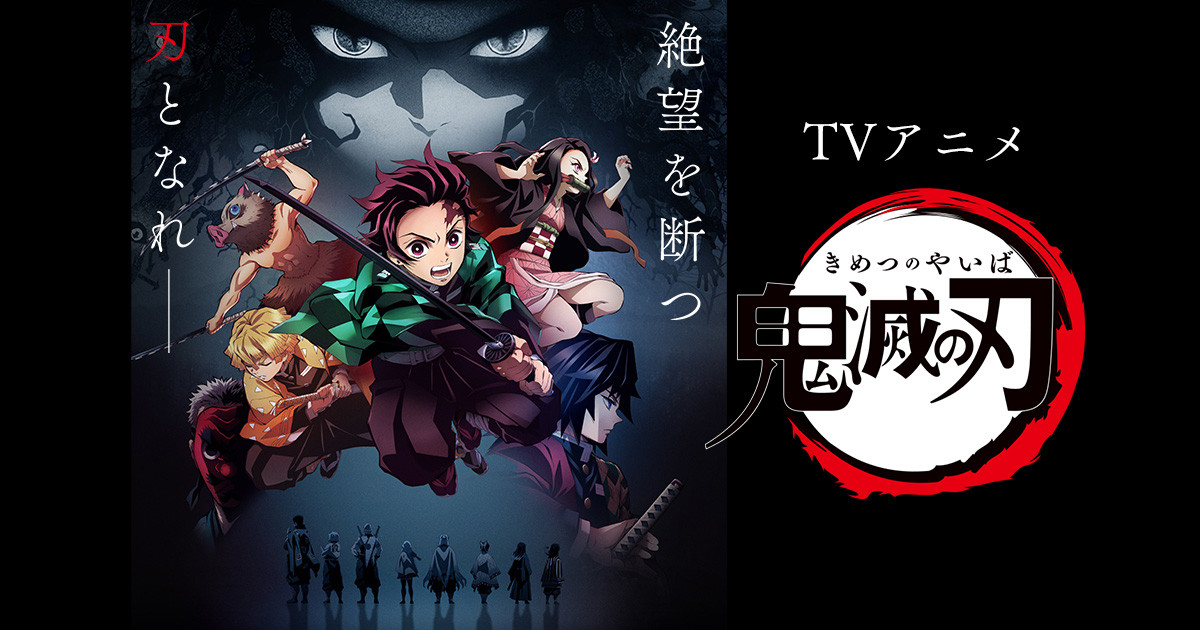
Image Source
Season 1 of the anime is called 竈門炭治郎 立志編 (Kamado Tanjiro Risshihen) which means Kamado Tanjiro, Unwavering Resolve Arc.
Kamado Tanjiro is of course our main character. We break down the meaning of his name below.
立志 (risshi) means to determine your life goal and purpose. As it’s the beginning of the story when Tanjiro decides to join the Demon Slayer Corps with the ultimate purpose of turning his sister back into a human.
編 (hen) means arc, which is used in the title for every season of the anime. There are also smaller arcs (particularly in the manga), within each greater arc.
Kimetsu no Yaiba Season 2 Title Meanings
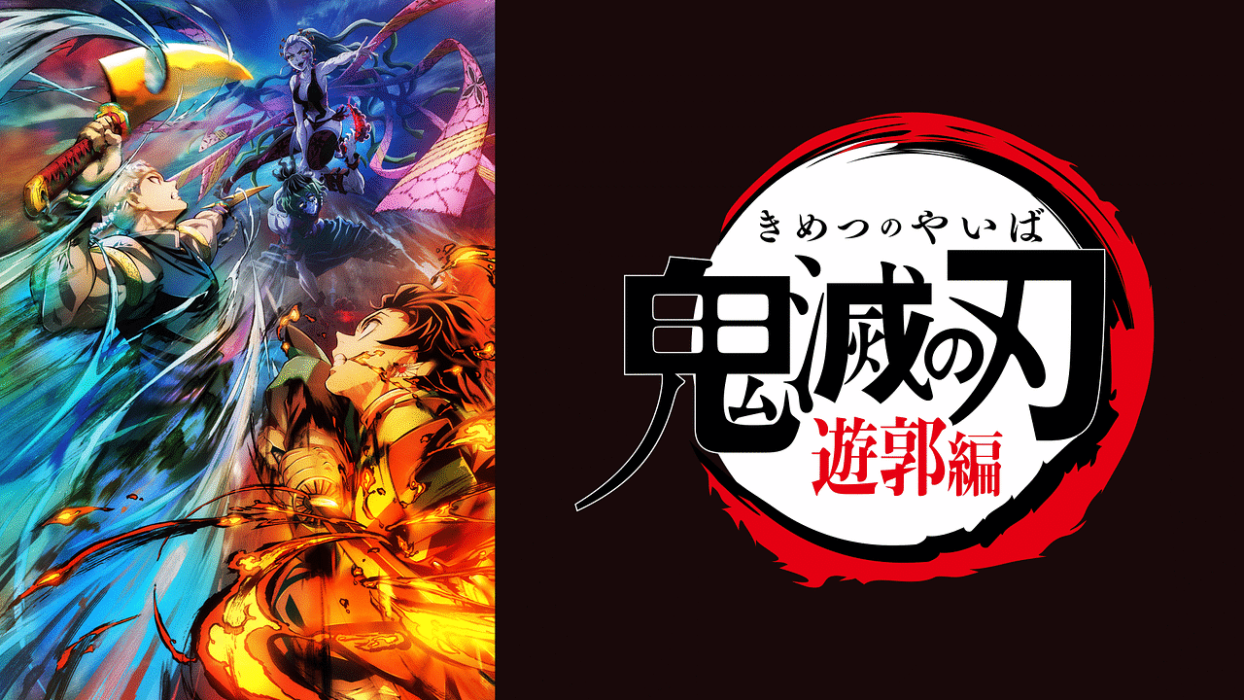
Image Source
Season 2 is split into two arcs.
The first is called 無限列車編 (Mugen Ressha Hen) - the Mugen Train arc based on the film that was released after Season 1. 無限 (mugen) means infinite and 列車 (ressha) means train.
The second arc and main part of the second season was called 遊郭編 (Yuukaku Hen) - The Entertainment District Arc. However, the entertainment district it refers to is specifically a red-light district. The one in this season is Yoshiwara, which is an area in present day Asakusa. Although it no longer looks like it does back then.
Kimetsu no Yaiba Season 3 Title Meaning
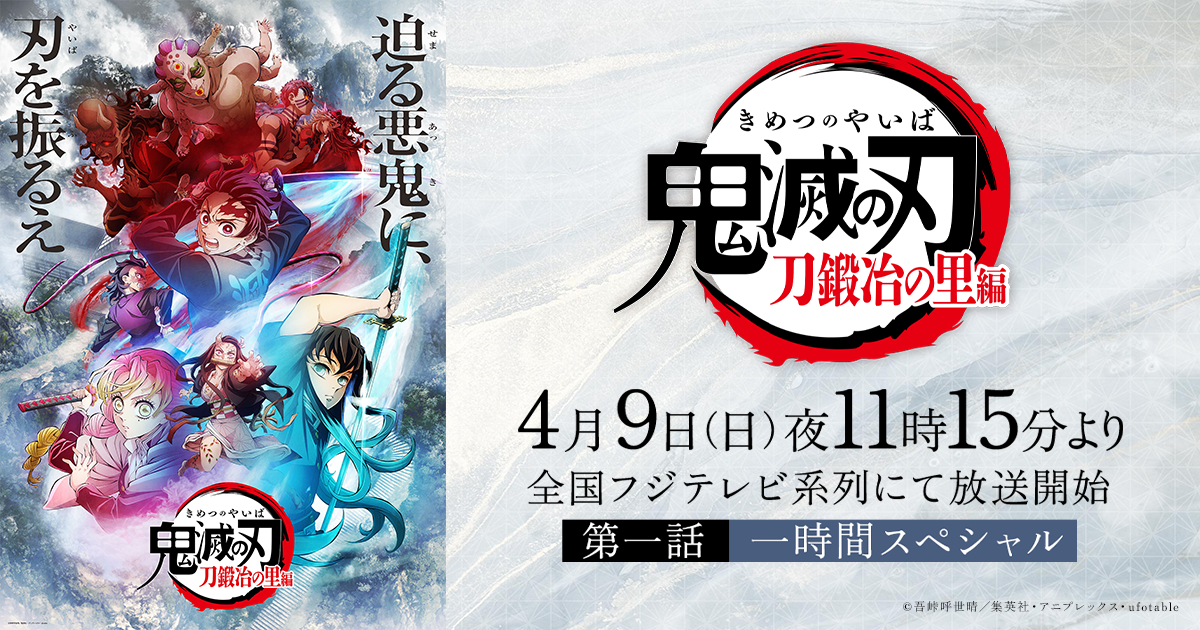
Image Source
Season 3 of the anime is called 刀鍛冶の里編 (Katanakaji no Sato Hen) or the Swordsmith Village Arc.
刀 (katana) means sword or blade, while 鍛冶 (kaji) means forge or hammer. 里 (sato) is a word for town or village as well as hometown.
Writer's Pick
Kimetsu Character Name Meaning
As Kimetsu no Yaiba is set in the Taisho Era (1912 - 1926), the names of the characters don’t sound modern - but they’re also specifically created for this work.
Let’s start off with the main characters.
Kamado Tanjiro 竈門炭治郎
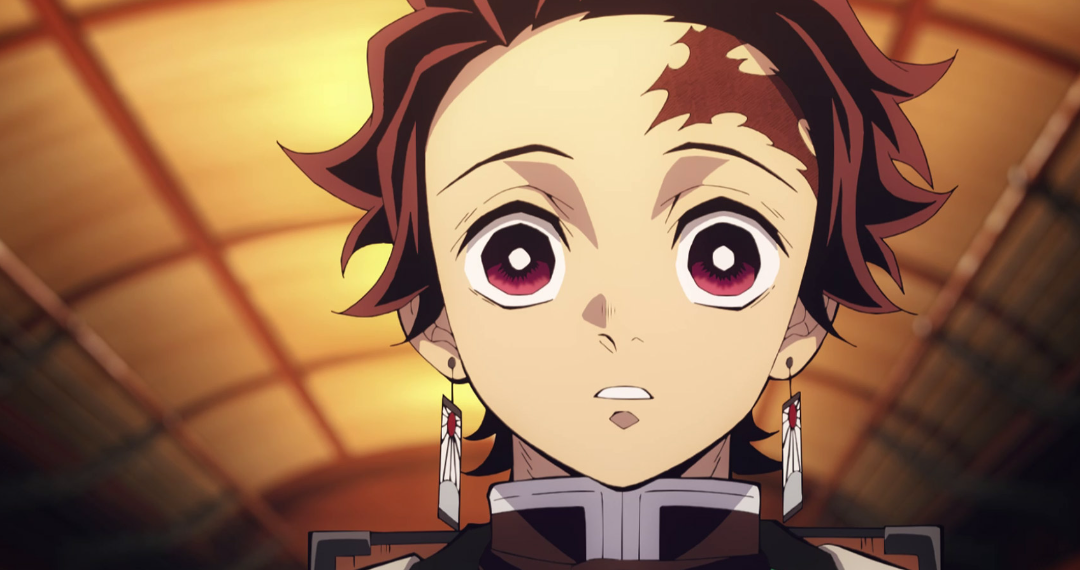
Image Source
Kamado Tanjiro of course is our main character, the brother of Nezuko who will do anything to protect her and find a way to turn her back into a human after the rest of their family is killed by a demon and Nezuko transformed into one. What’s notable about Tanjiro is how noble and good-hearted he is; he simply wants his only family left to turn back to a human, rather than being motivated by revenge. He mourns for the demons who were turned against their will and their tragic backstories, while also aiming to become stronger so that he can defeat them at the same time to stop them from harming more people.
Kamado (竈) is a traditional Japanese stove fueled by either wood or charcoal. The two kanji 竈門 are read Kamado together even though just the first character alone can be read Kamado. Kamado is a real last name in Japan, although very very rare, and is said to have origins related to places that deify Hinokami (god of fire). Thus fitting that Tanjiro’s special breathing style (fighting technique) is called Hinokami Kagura (kagura means dance) and includes fire.
There’s actually several shrines with the name 竈門神社 (Kamado Jinja) or Kamado Shrine.
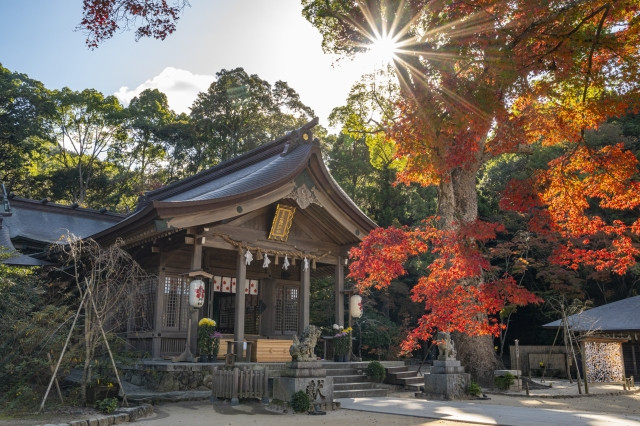
A popular one is Homangu Kamado Shrine in Dazaifu, Fukuoka. Not only does it have Kamado in its name, but the clothing worn by those undergoing training at the shrine has the same pattern as what Tanjiro wears.
There is also a shrine in Japan called Hachiman Kamado Shrine in Beppu, Oita, which has a legend about the god that it deifies taking down a demon that plagued the area. Many Kimetsu fans go there to pay their respects.
There’s also a shrine in Chikugo City, Fukuoka named Mizokuchi Kamado Shrine. Fans also visit this one to pay their respects, as Rengoku Kyojuro once mistakenly calls Tanjiro “Mizokuchi”.
Tanjiro
The first character of Tanjiro is 炭 (sumi) which means charcoal. Tanjiro’s family sells charcoal for a living, which is a fitting name. His father also has the same kanji in his name, but none of Tanjiro’s siblings do, which signifies that Tanjiro is the first-born and therefore the one that will take over the family business.
Jiro is a name given to boys (or attached to their name as a suffix) but is usually written 二郎 or 次郎. 治 means to heal, which is fitting because Tanjiro’s life mission is to heal his sister.
Kamado Nezuko 竈門禰豆子
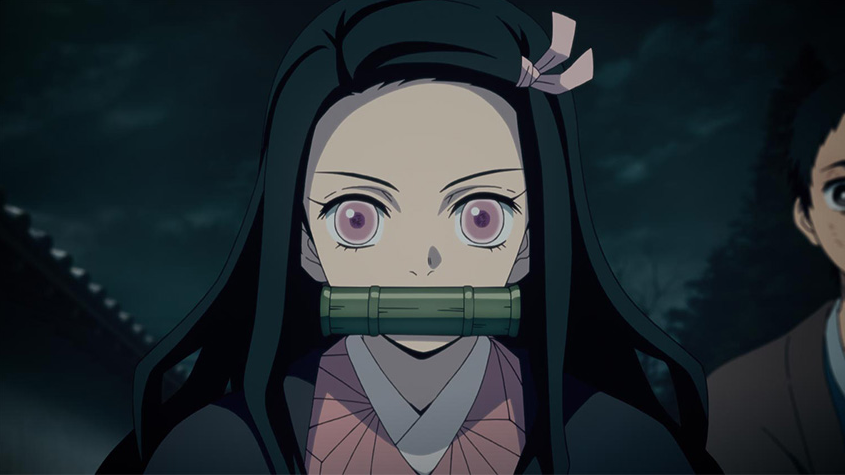
Image Source
Nezuko is Tanjiro’s beloved sister. She is the second eldest in the family, and is the only one to survive the horrible incident when her entire family is slaughtered. She turns into a demon, but somehow manages to retain human-like qualities and emotions. She is fiercely protective of her brother. When she’s not fighting, she’s often sleeping to regain her strength in a box that Tanjiro carries with him.
The first character in her name, 禰 (ne), speaks volumes.
It means a variety of things, including “father’s mausoleum” or a place where you honor an important spirit, a sacred cloth you take with you to battle, a symbol of ritual sacrifice as well as a beautiful flower.
You can draw elements of Nezuko’s personality, importance and situation from these definitions.
The second character in her name is 豆 which is usually read mame, or bean. This is significant in Japanese culture because there’s a seasonal ritual in which beans are thrown at demons to drive them (and misfortune, bad luck) out in order to welcome good luck into people’s lives and homes. This custom is called Setsubun. Considering that Tanjiro’s goal is to “drive the demon out” of Nezuko to return her to her human state, it’s incredibly fitting.
子 (ko) means child but is also often attached to women’s names as a suffix. Names that end with -ko used to be more popular, but have become less common in recent years.
Agatsuma Zenitsu 我妻善逸
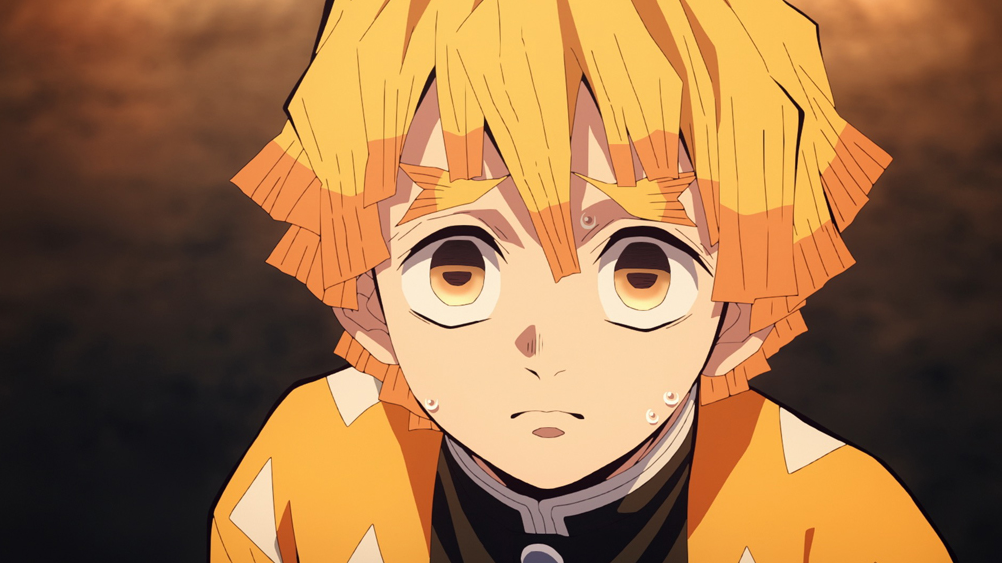
Image Source
Zenitsu is a Demon Slayer that Tanjiro meets, and they begin traveling together from then on. He is loud, scared of everything and not confident in his own abilities. However, it’s only when he’s in a “sleeping” state that he is able to harness his true power and fight. Unfortunately he doesn’t realize this, so he’s often seen as loud and a coward. He also falls in love easily and wants to get married before he dies, which he thinks is much more likely because of his Demon Slayer occupation.
Although his last name is read Agatsuma, it can also be read “waga tsuma” which means “my wife”, hinting at his women-loving personality.
善 Zen means righteousness, goodness, virtue.
And 逸 means excellence. But it also means to turn away from, to annoy, to run away. Which depicts the duality of Zenitsu’s personality and abilities perfectly.
Hashibira Inosuke 嘴平伊之助
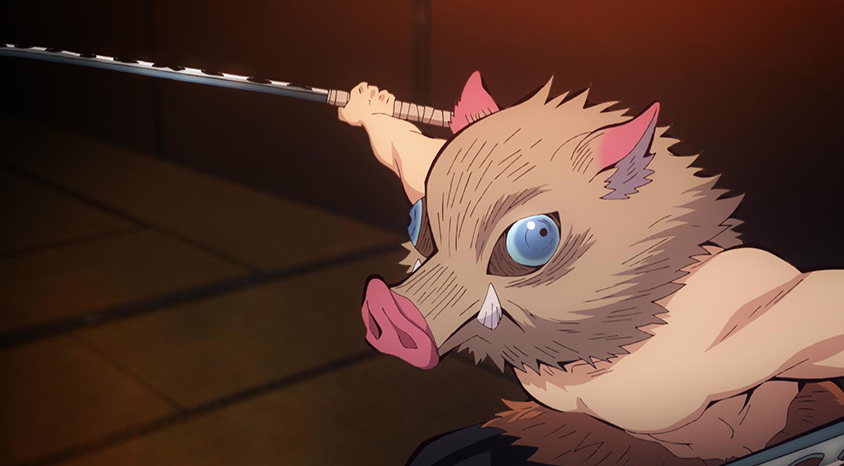
Image Source
Inosuke is the other companion in Tanjiro’s group. He wears a boar head mask most of the time, which conceals his very cute bishounen face, which seemingly doesn’t match his very brash personality. He, unlike Zenitsu, is highly confident in his own strength and abilities, and finds purpose by challenging those stronger than him to a fight. But he is not immune to others’ kindness.
Inosuke’s name is interesting because half of his name is a mystery, while the other half is straightforward.
嘴 is usually read kuchibashi, which means bird’s beak. This is strange, as it doesn’t relate to Inosuke’s association with boars. Hashibira is also not a last name that exists in Japanese, so it’s hard to find the point of reference.
On the other hand, Inosuke clearly comes from the word inoshishi, which means boar. The -suke 助 at the end is the character which means “to help” or “to save”. This reflects Inosuke’s willingness to jump in to fight to protect others without hesitation. He also “helps” Tanjiro a lot, willing to follow Tanjiro’s lead, which is quite rare for Inosuke to do.
鬼舞辻󠄀無惨 Kibutsuji Muzan
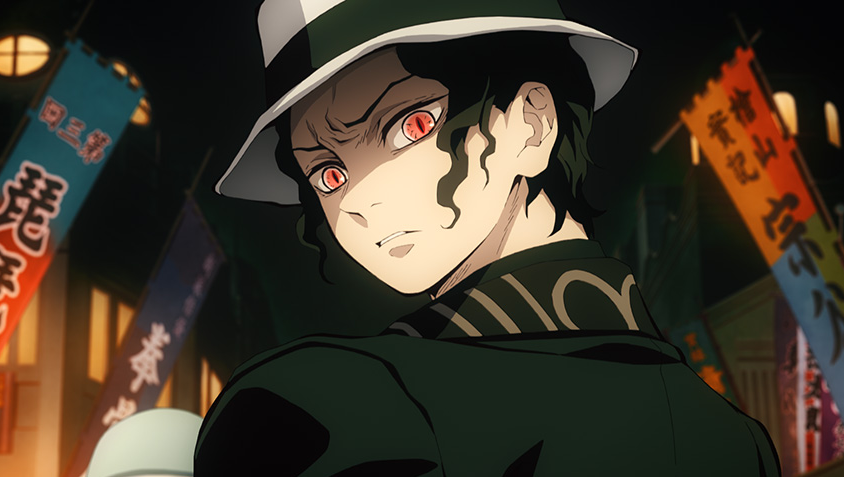
Image Source
Kibutsuji Muzan is the main antagonist of the entire series. He is a demon who has the ability to turn humans into demons with his blood. He doesn’t hesitate to kill both humans and demons if he is displeased, and is the one who killed Tanjiro’s family.
Kibutsuji has the characters 鬼 (oni - demon) and 舞 (mai - dance). As the one who can control all other demons through his blood, it makes sense that he is the one to “make demons dance”.
無惨 Muzan is a Buddhist term which means to sin without a feeling of remorse. It also means wretched, aggressive, pitiful, inhumane and horrid. Perfect for our antagonist, no?
He is said to be the one who named the Twelve Kizuki, the 12 strongest demons he created. (Kizuki is written 鬼月 which means demon moon.) While we won’t introduce all of them, here are some important ones to know (up to Season 2 of the anime).

Image Source
-
Rui 累 is one of the main antagonists of Season 1. He is a Spider Demon obsessed with the idea of “family”. His name means “connection”, which is a play on both his obsession with familial bonds as well as his weapon of choice - his webs.
-
Enmu 魔夢 is the antagonist of the Mugen Train arc. His name means devilish or demonic dream - essentially “nightmare”. His power is to kill people by making people sleep and making them dream pleasant things before plunging them into nightmares.
-
Daki 堕姫 and Gyutaro 妓夫太郎 are siblings who serve as the main antagonists of the Yuukaku Arc in Season 2. Daki means disgraced woman, and Gyutaro means pimp. This is a very straightforward way of showing that they work in the prostitution industry.
Hashira 柱
The Hashira 柱 are the most powerful Demon Slayers in the Demon Slayer Corps. There are 9 of them, each of them a master of one of the elements of the Breathing Techniques that the Demon Slayers use in combat.
柱 hashira literally means “pillar” which is apt to call the members who uphold the Demon Slayer Corps. When one Hashira falls, a new person will be appointed to take their place. Fun fact: the kanji 柱 has 9 strokes, which is said to be the reason there are 9 Hashira (as opposed to 12 to combat the Twelve Kizuki, in case you were wondering like I was).
Here are just some of the main Hashira we encounter up to Season 2 of the anime.
-
Giyu 義勇 is the first Hashira that Tanjiro meets. His name means righteousness and courage.
-
Shinobu しのぶ does not have kanji characters for her first name, so it could mean to hide, to hold back, to remember (often used for “remembering the deceased”). Her last name 胡蝶 (Kocho) is another word for butterfly.
-
Rengoku 煉獄 means purgatory, which is often imagined with fire which purifies souls. Rengoku can then be seen as a character whose flames extinguish the wrongdoing of demons.
-
Tengen 天元 means origin of or originating from heaven. It was also the name of an era in Japanese history. It’s also said to be tied to the phrase his wives’ names come from, found in Genji Monogatari, which was written in the Tengen era.
And while not a Hashira, Ubuyashiki Kagaya is their leader. Kagaya uses the radical for light 光 in one of the characters, which is something the demons hate. Fitting for the leader of the Demon Slayers!
To Close
We hope you found this article as fascinating as it was to write it! It’s clear that the manga artist thought deeply about each and every name as well as their personalities - which makes sense why so many fans have a personal favorite!
We hope to write another article talking about the other fascinating Japanese terms you can learn, such as the Breathing Techniques. We will also continue to update this article as more characters appear in the anime.


































